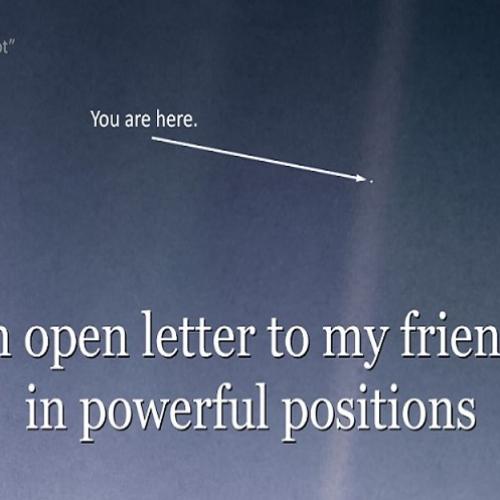
People, especially in my line of business, often say: “Change is constant.” Moreover, it’s true. Change is often needed to meet objectives in an ever-evolving business environment, and as such most of us have or will experience change through our jobs.
My career journey as an executive assistant (EA) has included some challenging bumps, potholes, and unplanned turns—and I’ve learned something new from each. I have experienced numerous change cycles and had the privilege to be able to help executive leaders during turbulent times. I know that when given the opportunity, the EA can be a considerable advantage for the executive leader and the organization. Here are some lessons on how to help leadership in times of change that I’ve learned along the way:
“…the EA can be a considerable advantage for the executive leader and the organization.”
Be Mindful
Mindfulness is defined as the practice of maintaining a nonjudgmental state of heightened or complete awareness of one’s thoughts, emotions, or experiences on a moment-to-moment basis. These experiences might include how your colleagues are reacting to change—they may be anxious and fearful—so it’s essential to be empathetic and help when possible. Once, amid a sizeable organizational workforce reduction, colleagues asked me what I knew, who was being let go, why, and when was this going to happen—assuming I’d have the inside scoop as an EA. Although I did have “insider knowledge,” I also had been entrusted by the leadership team to maintain confidentiality. It was vital for me to balance being empathetic to those who were uncertain about their future with preserving a high level of professionalism by remaining discreet. I did so by listening to and acknowledging their concerns over lunches, reminding them that historically, the company had always taken care of their employees and that typically when one door closes, three doors open. While it may be natural to try to isolate yourself when armed with information about changes that lie ahead, doing so may only contribute further to anxiousness and fear among colleagues. By being mindful and continuing to interact fully as a member of the team, you can help to maintain calm and forward momentum during times of change.
“Although I did have ‘insider knowledge,’ I also had been entrusted by the leadership team to maintain confidentiality.”
Be Optimistic
I must confess I’ve also experienced fear and anxiousness at the onset of a change process. However, I’ve found in most cases it’s incredibly helpful to maintain a positive, forward-looking perspective in the face of uncertainty. One time, my department was being merged into another that already had an EA—which was going to leave me without a job. There were many reasons for the merger, and I was able to echo the voice of leadership in support of the change. Additionally, I chose to remain optimistic and look for a career growth opportunity resulting from the merger. As such, I ended up proposing a new project manager role that would take ownership of various responsibilities from team members within the department—and it was approved. Although I was only in the position for about six months, I learned a great deal about project management before moving into a senior executive assistant position. By being optimistic and looking for a positive outcome from the change, I was modeling desired behaviors and actions in support of leadership objectives during the transition.
“…it’s incredibly helpful to maintain a positive, forward-looking perspective in the face of uncertainty.”
Be Authentic
I am a true believer that you should say what you mean and mean what you say. Candor is one way to express your authenticity and is of great value to executive leadership during times of change. As an EA, you are able to offer a unique perspective since you view the workplace and experience the team through a different lens. For example, after continual frustration with an existing gifting process, the administrative team made change recommendations to management—even though it meant challenging the way something had been done for many years. The result was a process that reduced costs, improved efficiencies, and simplified inventory management. Don’t be afraid to speak up, especially if asked directly for your opinion. By being authentic, you can provide another point of view for leadership’s consideration.
“Candor is one way to express your authenticity and is of great value to executive leadership…”
Be One Step Ahead
All of us within an organization should strive to understand the reasons for change and the desired outcomes. In the role of EA, it may even be possible to get a seat at the table to gain in-depth knowledge and help leadership in ways they may not have anticipated. During one organizational transition, it was my responsibility to manage logistics for a team reporting to the senior-level executive who I supported. The team met weekly to discuss status, issues, and actions. I asked to join the meetings so that I could capture and distribute notes—enhancing accountability among team members and improving execution. Being at the table also enabled me to be proactive instead of reactive in providing logistics support for the team. In another situation, while working on a transition team, we uncovered a critical skill gap, so I volunteered to learn the new software program in order to support the needed transition. By being flexible and proactive—a step ahead—you can further actions required for successful change.
“…get a seat at the table to gain in-depth knowledge and help leadership in ways they may not have anticipated.”
These lessons I’ve learned, of course, are easier to apply when leadership and the organization value and enable the role of the EA to assist in times of change. Before dialing up the candor or pushing for an expanded role, it’s worthwhile to assess the environment in which you’re working. Are open communications valued or discouraged? Is leadership willing to delegate responsibilities? Do they have a disposition towards providing the “why” with requests or directives? Do folks have “permission” to make mistakes? I have been fortunate to work with executive leadership in multiple organizations that value the role of an EA and have enabled me to meaningfully and uniquely contribute to helping those around me during times of change.
“Before dialing up the candor or pushing for an expanded role, it’s worthwhile to assess the environment…”
While reflecting on my career and writing this piece, I was reminded of a fond childhood memory, when, as a little girl, I would spend countless hours at my mother’s secretary desk (or escritoire) playing secretary. The desk contained envelopes, stamps, ink pad, paper, and paper clips—all the things a child thinks a secretary needs. I envisioned myself working as a secretary in a company office for a very important person. I’m not sure how role-playing as children determines our future, but when I consider my successful career journey as an executive assistant, I can’t help but smile at the thought of where it may have started and how it evolved to helping leadership in times of change.
Please feel free to follow me on LinkedIn or reach out to me via Nvolv.






